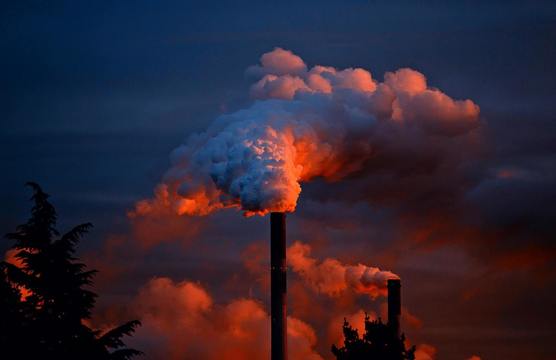Blog
Manufacturing Emissions: How to Reduce Them
22/06/2020
How to Lower Your Manufacturing Emissions
Climate change continues to be a huge threat to the world. Although there has been a huge international effort by 200 countries to limit global warming — the Paris Agreement set out how CO2 emissions can be reduced — there’s still a long way to go. That’s why government-driven carbon reduction policies have been rolled out across the globe.

But, as we introduce stricter carbon reduction targets, how does this affect more energy-intensive industries like manufacturing?
The manufacturing industry has a vital role to play in the continued growth of the global economy, contributing a huge £6.7 trillion each year. While this may be promising for UK prosperity, it also means that manufacturing is contributing massively to our current carbon emission levels.
There are three ways you can, as a business, lower your manufacturing emissions:
- Efficiency measures
- Carbon reduction at its core
- Restore the balance
So, what does this mean? Let us explain:
Efficiency measures
Having the right fuel source is of course a crucial part of reducing your businesses’ carbon footprint. However other efficiency measures are available to help you minimise your impact. One is to encourage or incentivise your employees to work from home. This can help reduce transport emissions, while having the right control systems in place can also mean that fuel and energy consumption is kept to a minimum.
Elsewhere, why not invest in smart technology, scale back on business waste, install effective insulation, or carry out regular system maintenance? Those who employ these measures are best placed to meet increasingly strict carbon and pollutant reduction targets. They can also benefit from enhanced operational efficiencies and reduced costs in the process.You can read more tips on reducing your emissions here.
Carbon reduction at its core
Carbon offsetting presents an immediate and valuable solution. However, lowering your energy usage as its core is crucial to driving down carbon. This means that, if you’re a manufacturing company, you should assess the efficiency of your current fuel supply. This is particularly important for those who are based off the national gas grid and still relying on oil. By switching to a cleaner energy source, you can reduce your emissions while also reducing your overall energy costs.
There are several options to help rural manufacturing businesses get on the path towards a greener future.
One is LPG (liquefied petroleum gas) . LPG (liquefied petroleum gas) is a cleaner, greener and more efficient energy source when switching from oil or solid fuels – one that’s reliable and could bring you big savings on your energy costs. What does this mean for manufacturing companies? A lower carbon footprint and a cleaner, more futureproof supply.
LNG (liquefied nitrogen gas) is another option. It’s one of the world’s fastest growing gas supply sources and is rapidly turning into the go-to option for manufacturers who are looking to lower their carbon footprint.
It is extremely efficient, takes up around 600 times less space than natural gas and is lighter than water. This makes it much more efficient to transport and store. It’s also the cleanest burning off-grid fossil fuel, releasing significantly less carbon and few pollutant emissions, including NOx (nitrogen oxides), Sox (sulphur oxides) and PM (particulate matter).

Then there is Bio-LNG — a highly sustainable version of LNG with an almost identical makeup. It’s a hugely efficient and is created during the anaerobic digestion (AD) process, which breaks down organic matter (such as food, sewage sludge, or animal waste) to produce methane-rich biogas. Therefore, Bio-LNG is renewable energy source.

Restore the balance

A certain level of carbon emissions will always be unavoidable during manufacturing. However, an internationally recognised process called ‘carbon offsetting’ , can help businesses immediately.
Simply purchase carbon credits based on your anticipated energy consumption. This can be used to offset unavoidable emissions created during your day-to-day operations. Each credit helps to support an environmental project by capturing or reducing one equivalent tonne of CO2e that otherwise would not be captured.
For example, here at Flogas, we offer customers the chance to offset 100% of their carbon impact from using gas. This is a hugely popular option for those running manufacturing processes. As well as mitigating their emissions and supporting worthwhile conservation and renewable energy projects, they use it as a positive marketing message to their own customers, helping them stand out from the competition.
